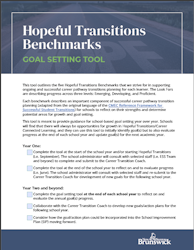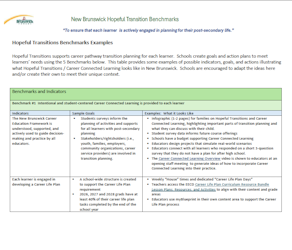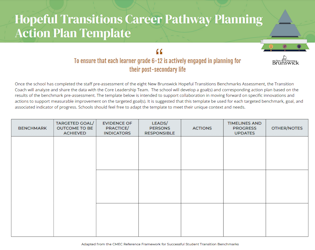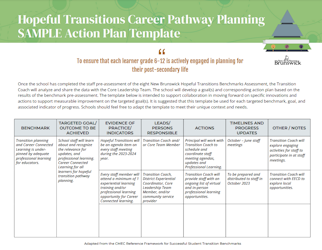Hopeful Transitions Benchmarks
Hopeful Transitions Benchmarks
Schools will use the following five Hopeful Transition Benchmarks to guide practice towards successful career pathway transition planning for each learner. Each school will select goals based the appropriate benchmark(s) to best meet the needs of their learners and school context. When used to guide practice the benchmarks enable schools to: self-assess, plan improvements, and celebrate progress.
1. Intentional and student-centered Career Connected Learning is provided to each learner.
2. Career Connected Learning Best Practices are integrated across subjects and grades.
3. Learners that require additional support(s) in career pathway transition planning are identified and supported.
4. Educators can access Career Connected Learning and Hopeful Transitions Professional Learning.
5. Career Connected Learning and Hopeful Transitions is regularly assessed for continuous improvement.
The Hopeful Transitions Benchmarks are adapted from the original language of the CMEC Reference Framework for Successful Student Transitions.
Getting Started with the Benchmarks
When a school implements Hopeful Transitions the School Principal will use the Hopeful Transitions Benchmarks Goal Setting Tool to reflect on school strengths and to determine areas for growth. The completion of the tool enables the school to easily identify goal(s) for the school year.
Hopeful Transitions Benchmarks In Action
[click image for PDF or access the Flipbook]
The Benchmark Action Plan document can be used to plan for achieving goal(s) and/or can easily be incorporated into the School Improvement Plan (SIP).




